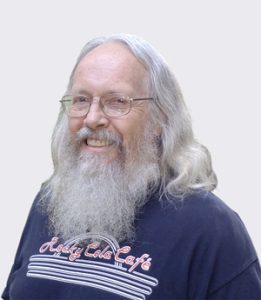CV’s First Inhabitants – Life at the Mission
I have written for several weeks about the life of the Native-American village of Wiqangna, located near La Tuna Canyon, most likely on the land that is now the (defunct) Verdugo Hills Golf Course. After hundreds, perhaps thousands, of years of existence, the village and its inhabitants were absorbed into the Mission system. Last week I fictionalized the last days of the village, and its abandonment, seen through the eyes of an old man. Here is another fictionalized account through the eyes of a young native, an “Indio,” who was born at the Mission. The year is 1826.

president of the Historical Society
of the Crescenta Valley and loves local history. Reach him at
lawlerdad@yahoo.com.
“I was born at the Mission San Gabriel 20 years ago. My parents both came to the Mission from the same village, a place about 15 miles to the northwest, a place called Wiqangna. My mother has told me much of her life there, the old ways of our people before the Spanish came. She died just a couple of years ago of what the Fathers told me was ‘consumption’ [tuberculosis]. Many of the other Indios here have that same disease, and many other diseases, and many of them die. My father did not die. I think he might still be alive. He was very unhappy here and he ran away. Some runaway Indios who were brought back by the solders say maybe my father lives in the hills called Verdugos with many other Indios. They steal our cattle to eat.
“But I am very happy here! I am a vaquero, and I work for the Mission Fathers taking care of their thousands of cattle and horses. I am a great horseman and everywhere I go, I ride, always in the saddle. I dress in fine clothing, better than the other Indios who tend to the fields. Father Sanchez gave me a long red cloth, which I tie around my head, and I have also have made a belt of it. I am very proud of my skills and my status as a vaquero.
“Last week, the mayordomo [foreman] sent me to bring back some of our cattle that had strayed up into the land owned by Don Verdugo. Don Verdugo had been a corporal of the guard here at the Mission before I was born, but he retired, and now owns the big Rancho San Rafael. The cattle I was told to bring back were on the north end of the rancho, in a little valley we call ‘Big Rocks’ (Crescenta Valley), which Don Verdugo never uses. I was very excited to go there as that’s where my mother said her village was and that’s where my father may live now.
“I rode northwest on the trail to Mission San Fernando, past the old village site of Hahamongna in the Arroyo Seco, and up into the dry sagebrush of the valley of Big Rocks. I stopped to water my horse under the oak trees at the cool spring [Indian Springs Shopping Center near Montrose] and there I found our cattle, 20 of them. Before I brought them home, I was curious to see the village site of Wiqangna, so I rode further. I found it, on a small rise at the end of the valley. I found many rock circles where homes had been and the spring my mother talked about. I looked south to the hills [Verdugo Mountains] and saw smoke from a campfire. When I rode there, the Indios there ran away. I lassoed one of them and asked about my father, but he was from the islands [Catalina] and I could not understand him. I rounded up my stray cattle and returned to the Mission.
“When I arrived, there was much excitement. Seveteen Americanos had just ridden in, led by a Señor Jedediah Smith. They were looking for animal skins, beaver mostly. Father Sanchez welcomed them but some of the Mission solders told me they didn’t trust the Americanos. They said the Americanos wanted our land. For some reason, I feel like I will be seeing many more of these Americanos. I hope they are good to us Indios.”
